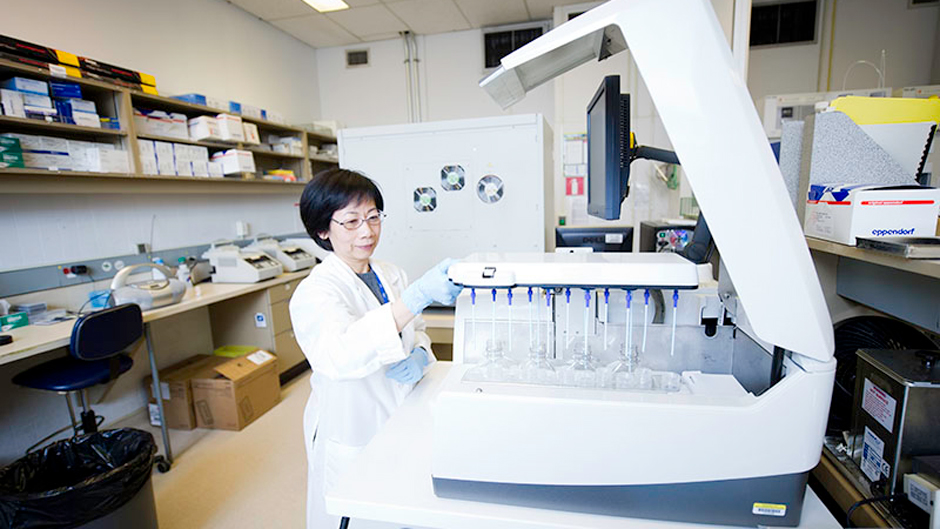Huge advances have been made in the treatment of HIV and AIDS. In our lifetimes, we witnessed the emergence of this global pandemic. We then watched as researchers developed anti-retroviral therapies that not only turned this devastating infection into one that was treatable, but that also vastly reduced disease transmission by reducing viral load to undetectable levels in the blood of infected patients.
A 20-year-old HIV-positive adult on antiretroviral therapy in the United States or Canada could expect to live into their early 70s, a life expectancy approaching that of the general population. This is an incredible story of innovation that is changing global standards of care.
However, bringing this vital treatment and early intervention to the patients who need it requires a cultural shift. Poverty and socioeconomic factors can be major barriers to accessing treatment, and this is a real public health issue. In the past, injection drug users in particular faced difficulty accessing care; there was real risk of developing resistance if a treatment plan was not consistently followed. Implementing strategies that welcomed vulnerable communities has since reduced transmission rates.
This case study underscores the fact that conquering HIV requires more than medical advances. Traditionally underserved and marginalized populations must be reached, including injection drug users. The stigma attached to programs like safe injection sites and needle exchanges is an obstacle to providing care and lowering transmission risk. Our social programs need to match best practices.
These 5 BC-CfE Findings Challenge Assumptions on Drug Use and Public Health
List by Caroline Dobuzinskis at the British Columbia Centre for Excellence in HIV and AIDS, reprinted with permission. Read the original post here.
1. Supervised injection sites prevent needle sharing
A 2001 study found, despite the availability of a large needle-exchange program and targeted law enforcement efforts in Vancouver, needle sharing was still an alarmingly common practice. The researchers suggested the trend could be stemmed through access to safe injection sites, by alleviating the factors leading to more risky behaviours such as difficulty in getting needles.
Supporting this recommendation, a 2005 study published in The Lancet found the use of safe injection sites was associated with a reduction of close to 70% in the probability of syringe sharing. A 2011 paper published in The Lancet found Insite to be associated with a 35% reduction in overdose deaths in the area surrounding the supervised injection facility.
2. Needle distribution found to be more effective than needle exchange in reducing sharing
Widespread syringe distribution was associated with a reduction in needle sharing, according to a 2010 study, suggesting less limited programs were more effective. In other words, syringe programs proved more effective when they focused on the distribution – rather than the exchange – of syringes.
3. Peer drug user groups provide effective care, support and disease prevention
In 2006, BC-CfE researchers found an unsanctioned needle exchange reached injection drug users who were at the highest risk of HIV infection. The nighttime, fixed-site exchange was run by the Vancouver Area Network of Drug Users (VANDU) and reached nearly 30% of the injection drug users surveyed. The findings indicated the benefits of peers assisting peers through programs run by the drug user community.
VANDU has performed a critical function by providing care and support responsive to immediate needs of their peers. A 2006 community-based study demonstrated that – through years of activism, advocacy and public education – VANDU has repeatedly voiced drug users’ concerns both publicly and politically. The study is noteworthy in the close collaboration with community as a key method, and points to a role for drug user networks in policymaking and programming.
4. Community viral load better predictor of HIV transmission than even risk behaviour
In a paper recognized by the US National Institute of Drug Abuse as one of the top scientific advances for lobbying American Congress, researchers from the BC-CfE found community viral load was the strongest predictor of HIV transmission among injection drug users (IDUs). The measure observed represents the average HIV viral load among those who are living with HIV within a given community.
Treatment as Prevention® – universal access to HIV treatment upon diagnosis – can successfully prevent HIV transmission by reducing viral load among those on consistent treatment. The study provides strong support for the public health benefits of universal access to treatment, particularly among at-risk groups such as IDUs.
5. Thailand’s War on Drugs found ineffective in reducing drug use
A 2009 study based in Thailand looked at the impacts of increased police presence on drug use patterns. Thailand’s War on Drugs, implemented in 2003, was linked to violence and deaths due to emphasis on strict enforcement, as opposed to harm reduction and addiction treatment.
Despite increases in reported police presence among injection drug users, the study found no change in intensity of drug use and related risk behaviours. The research suggests the strict anti-drug policy was ineffective and, alongside reports of extrajudicial killings and other human rights violations, strongly indicates a need for a re-evaluation of the country’s drug war strategy.
BONUS:
6. Addictions medicine training is the key to improving health care for millions across North America
Addiction is prevalent in diverse communities within the United States and Canada, but the issue is not often reflected in the health care response. In the Journal of the American Medical Association, UHRI Co-Director Dr. Evan Wood – joined by Dr. Jeffrey Samet and Dr. Nora Volkow – expressed concerns on the negative impacts of the health care system’s failure to adequately address addiction. This includes the over- and under-prescribing of opioids, linked to recent spikes in drug misuse within many towns and communities. Furthermore, the lack of specialized and expert treatment in addiction can lead to poor outcomes with frequent co-morbidities, such as HIV and hepatitis. St. Paul’s Hospital now houses the Goldcorp Addiction Medicine Fellowship, led by Dr. Wood, which aims to train medical professionals to better address the needs of those with substance use disorder.
Want to learn more about advances in HIV/AIDS care? Check out more blog posts from the British Columbia Centre for Excellence in HIV and AIDS, in celebration of the UBC centennial: How We Treat HIV Today: Five Key Findings Paved the Way. Also check out our Orange Chair Interview with AIDS treatment pioneer Julio Montaner.









































